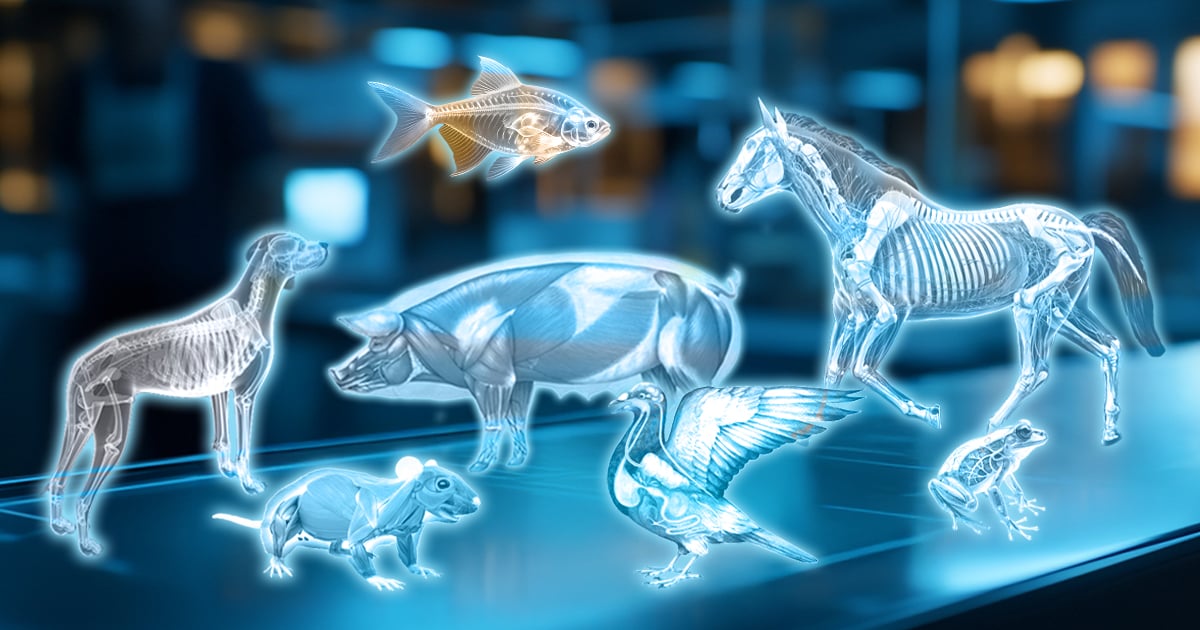- 2.3Impact Factor
- 3.5CiteScore
- 22 daysTime to First Decision
Comparative Anatomy and Histology in Animals
This special issue belongs to the section “Anatomy, Histology and Pathology“.
Special Issue Information
Dear Colleagues,
This Special Issue aims to explore the comparative anatomy and histology of animals, providing a deeper understanding of the structural and functional variations across species. Comparative anatomy plays a crucial role in elucidating the evolutionary relationships between different animal taxa, while histology allows for the detailed study of tissue structure and cellular organization within diverse biological systems. By examining the similarities and differences in anatomical and histological features, this issue seeks to highlight how these differences contribute to species-specific adaptations, physiological processes, and ecological niches. Furthermore, correlating differences in anatomy and histology between animal species with differences in physiology and pathology can contribute to the exploration of the molecular and cellular mechanisms responsible for the latter and to finding solutions to address them. Finally, knowing the differences in animal anatomy and histology significantly overcomes translational problems in research, makes it easier to select appropriate animal species for basic research, and promotes the doctrine of “One Health”.
Contributions to this Special Issue will focus on the morphological and histological analysis of various animal species, and their relevance in medical and veterinary fields. Studies examining tissue-specific adaptations, organ morphology, and comparative functional anatomy are particularly welcome. This Special Issue will provide valuable insights for researchers and practitioners in fields such as developmental biology and comparative physiology, contributing to a broader understanding of animal biology and its implications for health and disease.
Dr. Ioannis Grivas
Guest Editor
Manuscript Submission Information
Manuscripts should be submitted online at www.mdpi.com by registering and logging in to this website. Once you are registered, click here to go to the submission form. Manuscripts can be submitted until the deadline. All submissions that pass pre-check are peer-reviewed. Accepted papers will be published continuously in the journal (as soon as accepted) and will be listed together on the special issue website. Research articles, review articles as well as short communications are invited. For planned papers, a title and short abstract (about 250 words) can be sent to the Editorial Office for assessment.
Submitted manuscripts should not have been published previously, nor be under consideration for publication elsewhere (except conference proceedings papers). All manuscripts are thoroughly refereed through a single-blind peer-review process. A guide for authors and other relevant information for submission of manuscripts is available on the Instructions for Authors page. Veterinary Sciences is an international peer-reviewed open access monthly journal published by MDPI.
Please visit the Instructions for Authors page before submitting a manuscript. The Article Processing Charge (APC) for publication in this open access journal is 2100 CHF (Swiss Francs). Submitted papers should be well formatted and use good English. Authors may use MDPI's English editing service prior to publication or during author revisions.
Keywords
- comparative anatomy
- comparative histology
- comparative physiology
- animals
- veterinary

Benefits of Publishing in a Special Issue
- Ease of navigation: Grouping papers by topic helps scholars navigate broad scope journals more efficiently.
- Greater discoverability: Special Issues support the reach and impact of scientific research. Articles in Special Issues are more discoverable and cited more frequently.
- Expansion of research network: Special Issues facilitate connections among authors, fostering scientific collaborations.
- External promotion: Articles in Special Issues are often promoted through the journal's social media, increasing their visibility.
- e-Book format: Special Issues with more than 10 articles can be published as dedicated e-books, ensuring wide and rapid dissemination.

